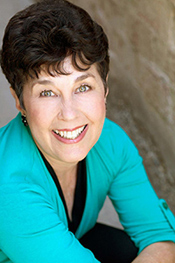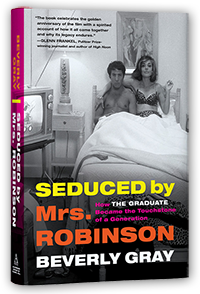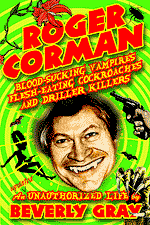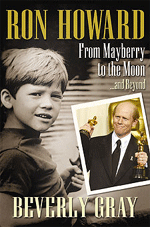Now that the nation’s universities are welcoming the class
of 2017, it’s time to salute a going-off-to-college movie that just celebrated
its fortieth anniversary. I’m talking about American
Graffiti, George Lucas’s groundbreaking 1973 look at some small-town California
teens on a late-summer night in 1962.
So many legends surround American
Graffiti. It was shot in sequence for 29 straight nights so that the
actors’ fatigue at the end of the film was genuine. Much of the dialogue was
improvised. The soundtrack relied
entirely on oldies dear to the hearts of those who remembered where they were
in ‘62. And the film catapulted George Lucas into the spotlight, four years
before Star Wars made him a Hollywood
titan. Moreover, this movie about teens on the brink of adulthood also featured
young actors who were on the brink of big careers.
Remember the film’s closing crawl? This was perhaps the
first time a movie ended with a few brief lines summing up the fate of the
central characters. I remember the audience (including me) gasping as we
learned that fearless John would be killed by a drunk driver in 1964, that Terry
the Toad was reported missing in action near An Loc in 1965, that nice-guy Steve
(who decided not to fly east for college) had become a hometown insurance
agent, and that Curt was now a writer in Canada. This terse recitation of the
characters’ adult lives truly hit home, because in 1973 so many of us were
facing Vietnam, or at least the need to choose between the safe path and the
one less traveled.
Most of the film’s actors weren’t household names . . . at
least, not yet. In 1973, I doubt we could have predicted their career successes.
Some of them never entirely lived up to their early promise. Paul LeMat, who
played the hot-rodding John Milner, won a Golden Globe as New Star of the Year
for his dynamic Bad Boy role. He’s still around, but mostly in
middle-of-the-road television. The same goes for Candy Clark, the film’s one
Oscar nominee for her portrayal of dizzy blonde Debbie. Cindy Williams (who
played Laurie) will forever be remembered for her amiable 1976-1983 sitcom, Laverne and Shirley. Harrison Ford’s
role as a rival racer who goes up against John at the movie’s climax got him
little attention. It took Star Wars to
make him famous, and Indiana Jones to
seal his reputation as an action star. But such films as Witness, The Mosquito Coast,
The Fugitive, and the recent 42 (in which he was a superlative Branch
Rickey) are testaments to his acting chops.
Richard Dreyfuss (Curt), has had a solid career, progressing
from playing brash young men to irritating oldsters (like Dick Cheney in W.) Just four years after American Graffiti he starred in a Neil
Simon romantic comedy, The Goodbye Girl. For his lively portrayal of a struggling
Off-Broadway actor, he won an Oscar, beating out no less than Richard Burton in
Equus. On screen Charlie Martin Smith
(Terry the Toad) may have been a doofus, but Smith is now well launched on a
serious directing career. While on location for American Graffiti, he often discussed his career goals with another
aspiring director, Ron Howard.
Howard, of course, was the one “name” member of the cast,
thanks to his Opie role on The Andy
Griffith Show. His performance as stay-at-home Steve helped win him a
starring role in Happy Days (1974-1984),
which circuitously brought him the opportunity to make his directorial debut with
Roger Corman’s Grand Theft Auto. But
that’s a story for another day.








It's an excellent movie - such a warm picture from a man who is not himself the epitome of warmth - and I know - I was one of two production assistants on a second unit he personally directed. Thankfully - that little known movie - Radioland Murders - also got me face time with two of the actors in American Graffiti (almost made the mistake of saying "stars of" but know better than that around these parts) - Candy Clark and Bo Hopkins made in-joke cameos as the parents of one of the other characters - their scenes were shot by the second unit so Mr. Lucas could direct them again. They actually did have a fairly warm reunion when the two actors arrived on set. Both were very nice and happy to take pictures with me. I gather both actors now make the rounds at car nostalgia shows, making more of a living signing autographs than acting these days.
ReplyDeleteI digressed a bit there, sorry.
American Graffiti - sandwiched in between THX-1138 and Star Wars - is certainly a bit of an anomaly on George Lucas's resume, but a welcome one. I agree about Paul LeMat - after a promising start as a leading man in the 70's, he just sort of petered out. That sort of thing happens regularly - Craig Sheffer would be a more recent example - and might be worth exploring in more depth sometime.
Meanwhile, Happy Anniversary American Graffiti!
And I'm happy to give YOU a chance to reveal your celebrity connections, Mr. Craig! One day, I'll write about a dreadful follow-up called More American Graffiti, which focuses on the marriage of Laurie and Steve. What a stinker!
ReplyDeleteWhat astonishes me about "American Graffiti" -- and this is probably because I wasn't much older than the characters at the time -- is that it seemed like it was showing such a different era at the time, even though it was only 11 years earlier. I can't imagine a movie set in 2002 having the same impact today.
ReplyDeleteA very interesting point, Howard. The shift from the 1950s to the 1960s mentality was a remarkable one, as I remember all too well. Thanks for writing. And do continue to visit Movieland!
ReplyDelete